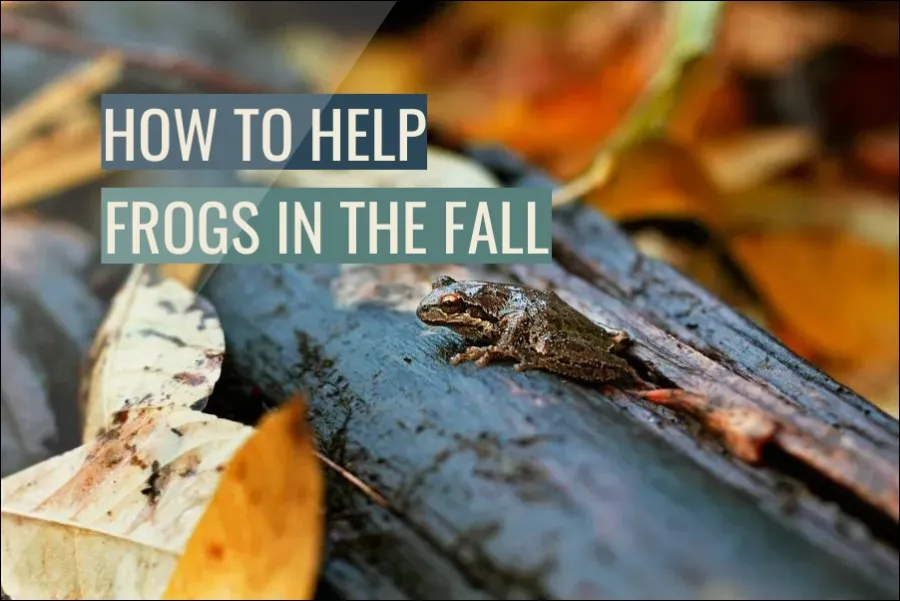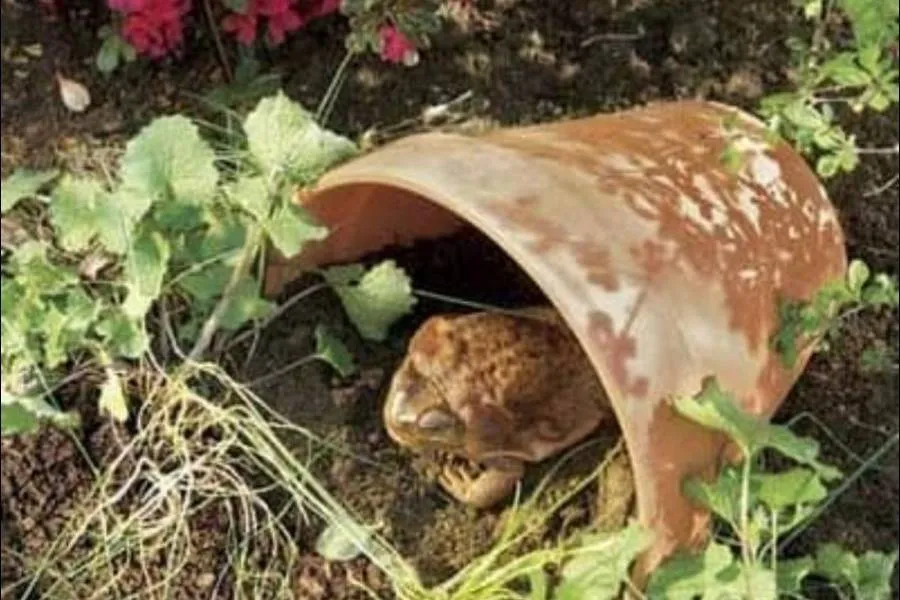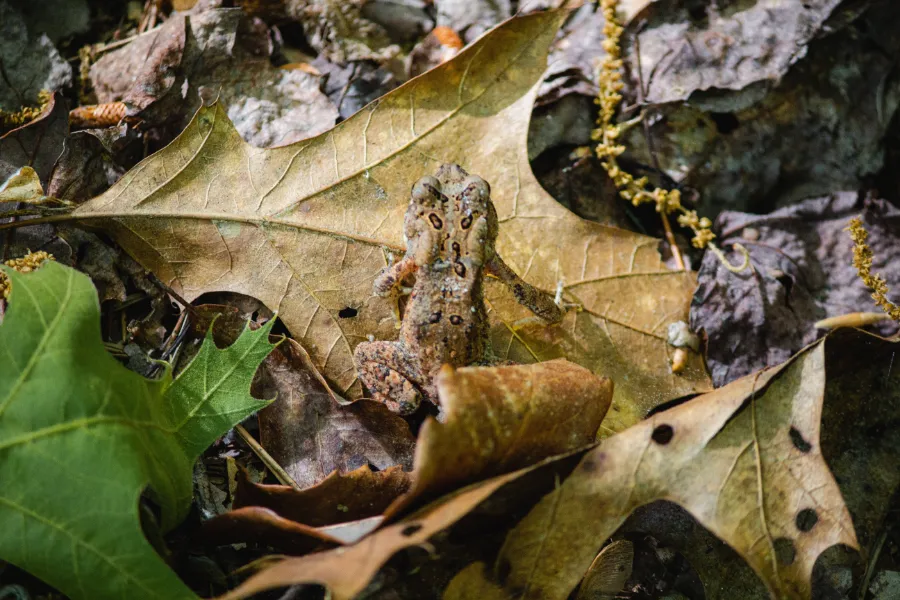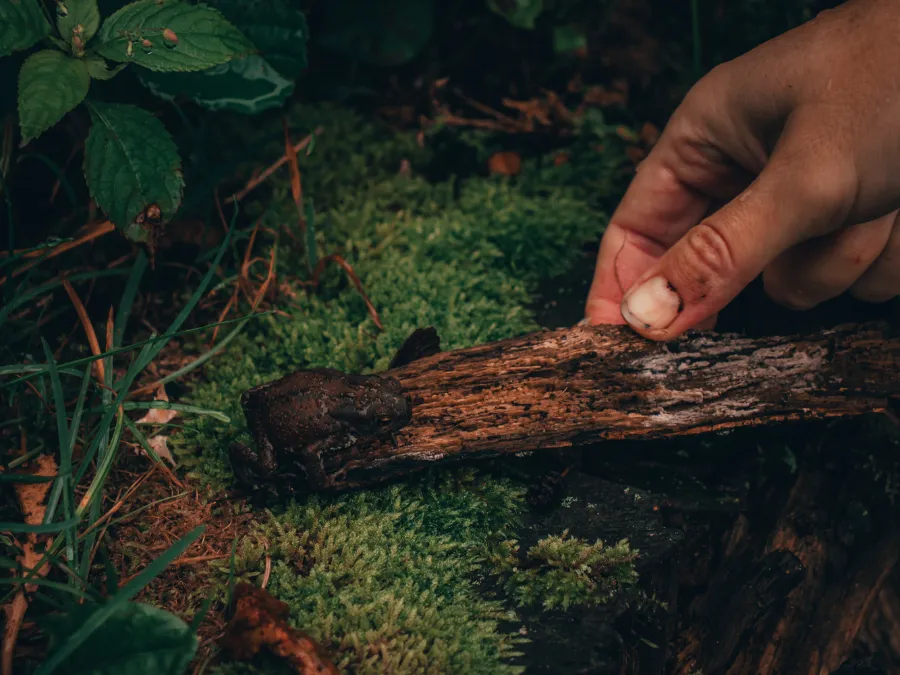
Fall is a time of change and transition, and it is also an important time for frogs. As temperatures cool and rain becomes more common, frogs begin to prepare for the winter months ahead.
To help frogs in the fall, create a suitable habitat, reduce pesticide use, protect against habitat loss, and participate in conservation efforts. This will support frog populations and create a hospitable environment for these animals.
Providing a suitable habitat
Providing a proper habitat is one of the most essential things you can do to aid frogs in the autumn. This might involve establishing a frog-friendly landscaping or building or installing artificial ponds or wetlands. Ponds should have a shallow and deep end, as well as abundance of aquatic vegetation to provide frogs with cover and food. Plant natural vegetation in your yard to attract insects and other invertebrates, which will offer food for the frogs. You may also provide frogs with refuge by placing rocks or log piles, or by constructing a habitat such as a “frog hotel.”

Reducing the use of pesticides and other chemicals
Pesticides and other chemicals are toxic to frogs and other species, therefore they should be used sparingly or not at all. Cooler temperatures and greater rainfall in the fall may make it easier for chemicals to penetrate the water supply and harm aquatic life, so use caution when applying these items. Instead, consider utilizing natural alternatives such as blooming plants that attract predatory insects or physical barriers such as netting or screens to keep pests at bay. Non-toxic pest management methods include hand-picking or hosing off bugs, as well as introducing predators such as birds or bats that will consume the pests. Reduce your usage of chemicals to make the environment safer for frogs and other species.
Protecting against habitat loss and degradation
Frogs rely on a range of habitats, including forests, wetlands, and grasslands, and these habitats are threatened by a number of factors, including development, pollution, and climate change. It is critical to maintain and restore frog habitats in the fall to help safeguard frogs. Supporting conservation groups, engaging in habitat restoration initiatives, or campaigning for regulations that protect natural areas are all examples of this. You may also help by building a frog-friendly garden or yard, which can give frogs with a safe and welcome environment.
Creating a frog-friendly garden
Aside from providing proper habitat and limiting chemical use, there are several more strategies to develop a frog-friendly landscape. Planting natural vegetation to offer cover and food for frogs, putting rocks or log piles for refuge, and building a habitat such as a “frog hotel” are some possibilities. Installing a small pond or marsh, or supplementing the frogs’ diet with live or frozen insects, can also provide a source of food for them. You may assist to support frog populations by designing a garden that fulfills their needs and provides them with a safe and welcome environment.
Participating in citizen science projects
Citizen science initiatives are research projects in which non-experts participate, and they may be an excellent way to get engaged in conservation efforts. There are several citizen science initiatives linked to frogs that you may engage in throughout the autumn, such as monitoring frog populations, collecting data on frog behavior, or assisting in the identification and mapping of frog habitats. Participating in these programs allows you to contribute to the greater conservation effort while also learning about frogs and their needs. FrogWatch USA, the Great Frog Count, and the Global Amphibian BioBlitz are some citizen science programs to consider.
Monitoring and conserving frog populations
Frog populations face several threats, and it is critical to monitor and track these populations in order to better understand their requirements and how to protect them. In the fall, you may assist by taking part in citizen science initiatives that include monitoring frog populations, or by looking for frogs in your region and reporting your findings to local conservation groups. You may also help to conserve frog populations by donating to organizations that strive to safeguard these species and their habitats and pushing for conservation measures.

Educating others about the importance of frogs
Finally, in the fall, you may aid frogs by teaching others about the importance of these species and the efforts that can be done to protect them. Frogs perform significant functions in the ecosystem and are environmental health indicators. You may help to generate support for conservation efforts and urge others to take action by increasing awareness about the importance of frogs and the risks they face. Sharing information on social media, chatting to friends and neighbors, or presenting information at schools or community events are all methods to educate others about frogs. You may also help groups that seek to safeguard frogs and their habitats, as well as push for conservation regulations. You may help to develop a groundswell of support for frogs by teaching people about them.
Creating or maintaining artificial ponds or wetlands
Frogs can benefit from artificial ponds or wetlands, especially in locations where natural ponds or wetlands are sparse. You may build or manage an artificial pond or wetland in the autumn by finding a good location, planning the size and form of the pond, and selecting appropriate plants and features. Consider the size and form of the pond, the depth and slope of the sides, the kind and number of plants, and the addition of objects such as pebbles or logs while establishing or maintaining an artificial pond or wetland. You may create a great home for frogs and other species by establishing or maintaining an artificial pond or wetland.
Planting native flora to provide cover and food for frogs
Frogs and other species can benefit from native plants as a source of cover and food. You may aid frogs by planting natural vegetation in the fall, which will attract insects and other invertebrates, which will give food for the frogs. Cardinal flower, Joe Pye weed, milkweeds, and trees or shrubs that provide cover are examples of natural plants that attract frogs and other species. Planting blooming plants that attract predatory insects can also assist to lessen the need for pesticides. You may provide a more friendly environment for frogs and other species by planting natural plants.
Offering a source of food for frogs
Finally, you may aid frogs in the fall by providing them with food. Frogs feed on insects and other invertebrates, which may be less plentiful in the fall as the temperature cools and the days shorten. Installing a small pond or marsh, or supplementing the frogs’ diet with live or frozen insects, can offer a source of food for them. Planting native vegetation that attracts insects and other invertebrates is another option, as is installing a bird feeder or other habitat element that attracts these species. You may help sustain frog populations and ensure that they have the resources they need to thrive by providing a source of food for them.

Helping frogs in the fall compared to other seasons
One of the most significant distinctions in caring for frogs in the autumn is that they may be prepared to undergo a period of dormancy, such as brumation or hibernation. Frogs may become less active during this period and require fewer insects to survive. It is critical to provide frogs with a suitable spot to brumate or hibernate, such as a wet, secluded niche in their environment. To imitate natural circumstances, it is also a good idea to lower the temperature and brightness in the habitat.
In addition to these measures, regardless of the season, it is critical to provide clean water and a suitable habitat for frogs. This entails supplying a diversified food of insects and other tiny creatures, as well as keeping the optimum temperature, humidity, and lighting for the species. It is also critical to check the frogs’ health and solve any problems as soon as they occur.
In conclusion
In summary, there are many things you can do to help frogs in the fall, such as providing a suitable habitat, reducing the use of pesticides and other chemicals, protecting against habitat loss and degradation, creating a frog-friendly garden, participating in citizen science projects, monitoring and conserving frog populations, educating others about the importance of frogs, creating or maintaining artificial ponds or wetlands, planting native flora to provide cover, and creating or maintaining artificial ponds. By following these measures, you may help support frog populations and make the environment more suitable for these essential animals.
